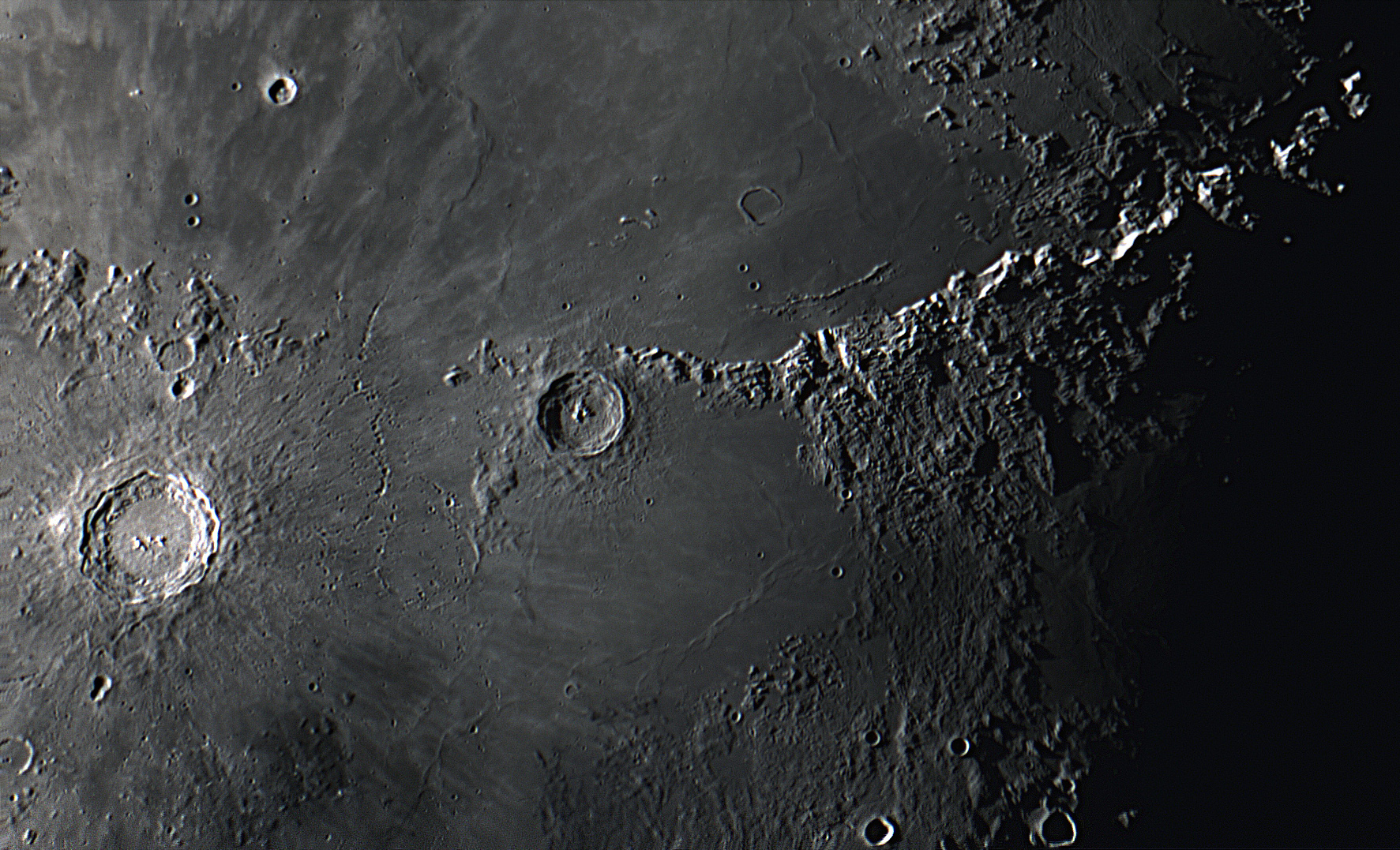|
Michael A. Stecker
|
|
|
Home
Astronomy Index Page
Solar System
Moon Fly Me to
Celestron 9.25-inch EdgeHD SCT . Photo-map of the gibbous moon |
|
|
Craters of the Moon . |
|
| Craters: Archemedes, Eratosthenes, Copernicus and Ptolemaeus | |
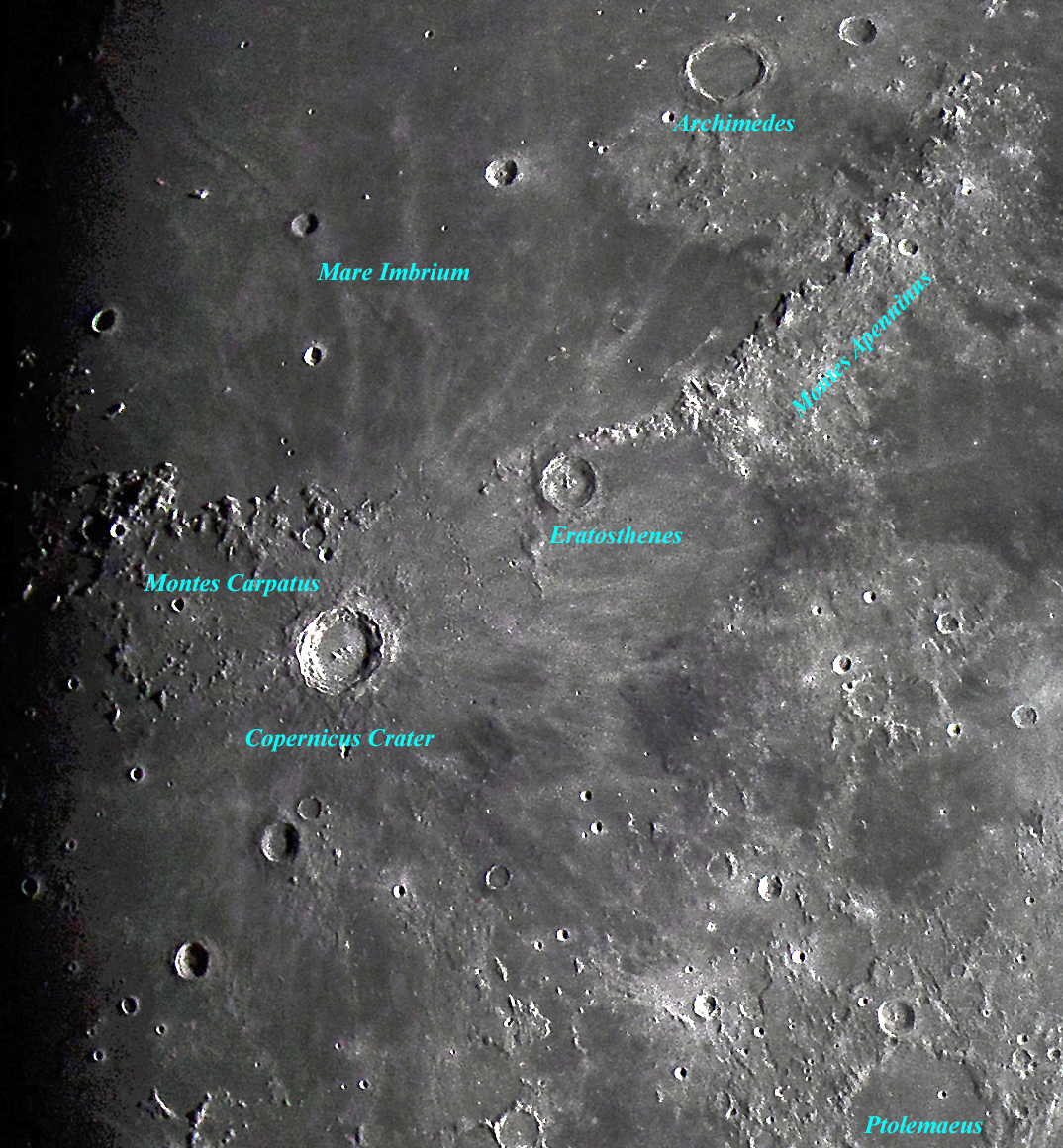 Labeled craters, mares and mountains of the central to northwest moon on March 12, 2022 file: moon3122022-IMG_2494d190drr-crMICCMC-L1.jpg |
|
|
Photographic Data Telescope: Celestron 9.25-inch EdgeHD SCT focally reduced to f/7 (1,650 mm focal length) Camera: Canon SL1 DSLR (cropped). Single exposure at ISO 100. Post Processing: Adobe Photoshop Elements 2021 |
|
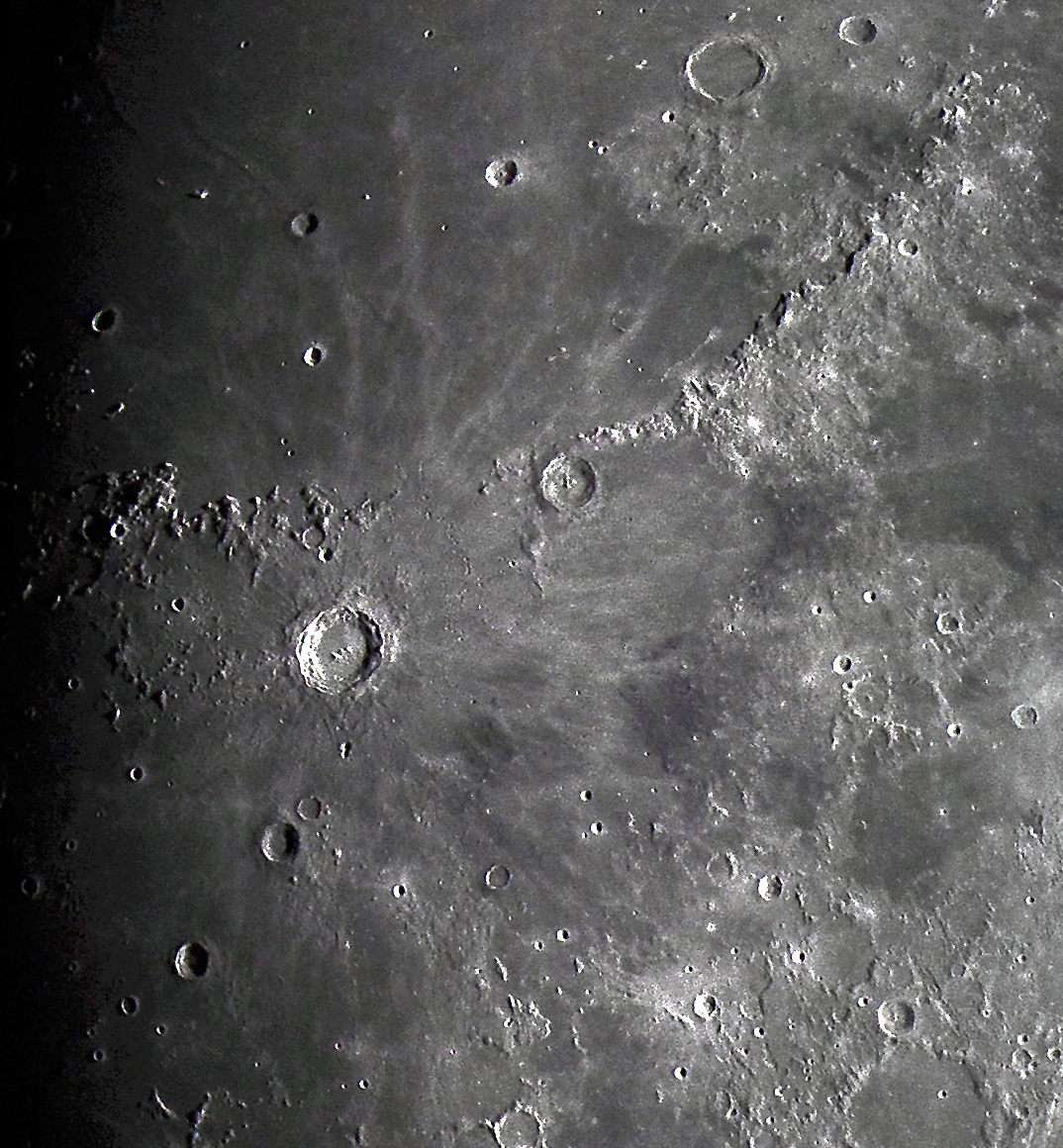 Same as above, but without the labeled text Craters, mares and mountains of central to northwest moon file: moon3122022-IMG_2494d190drr-crMICCMC.jpg |
|
| Clavius Crater | |
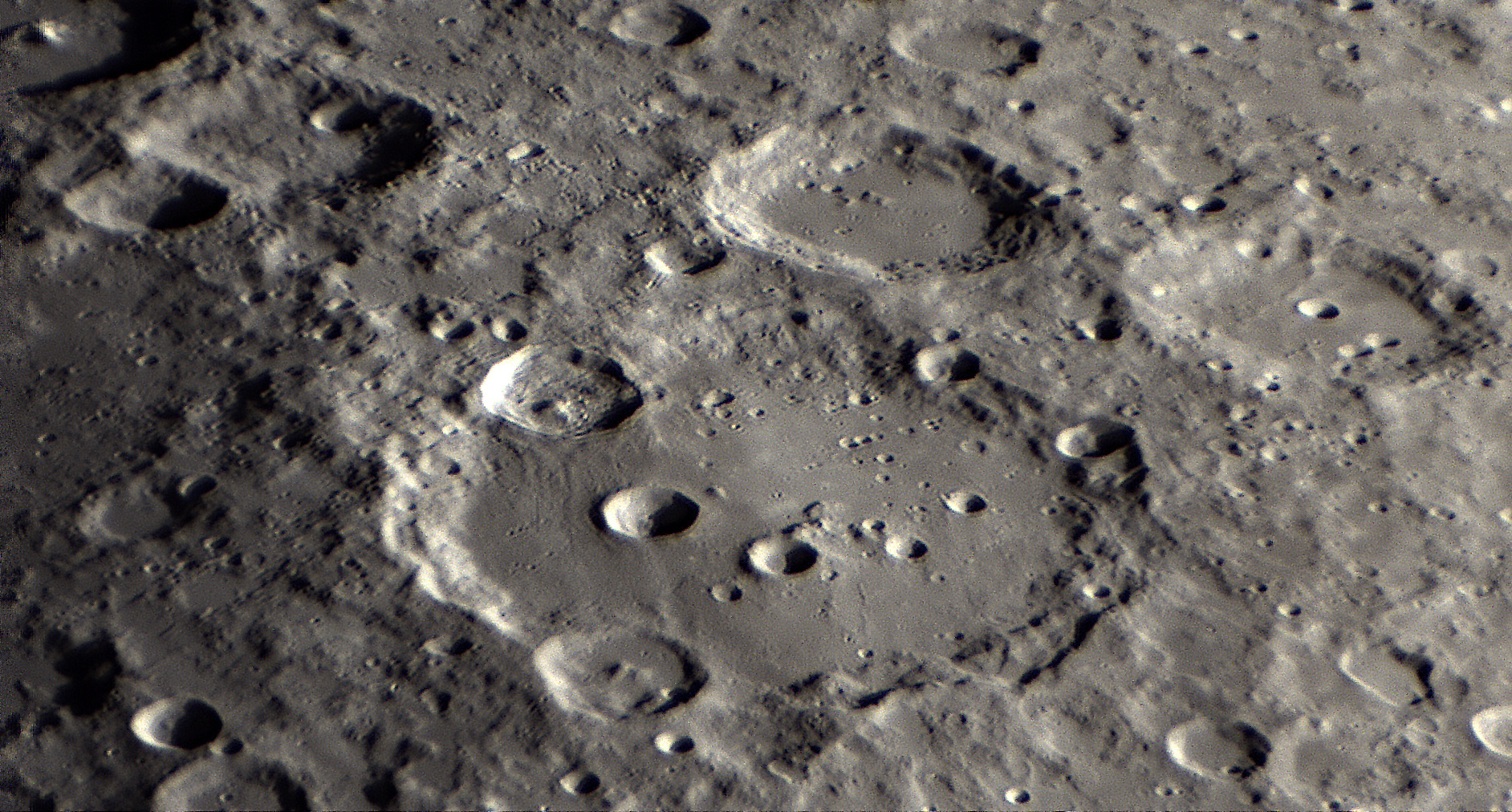 Clavius Crater was photographed from my backyard in Los Angeles, CA on September 17, 2022. file: MoonCraters-on9162022-1663330950143a2a.jpg . About Clavius Crater https://en.wikipedia.org/wiki/Clavius_(crater) Clavius (diameter 144 miles) is one of the largest craters on the Moon. It is located in southern highlands to the south of Tycho Crater. It is named for the Jesuit priest Christopher Clavius. . Photographic Data Telescope: Celestron EdgeHD 9.25-inch f/10 SCT with 2x Barlow to focal length 4,700 mm Camera: ZWO ASI662MC one-shot color planetary. Video frame rate about 100/sec, 2X Barlow and ZWO IR-cut filter Video Exposure: About 20 seconds video capture at 1920 X 1080 resolution, Gain set to100. Post Processing: Stacked & sharpened from video frames with Asiair Plus Adobe Photoshop Elements 2021 |
|
| Craters near the lunar equator northeast of Mare Nubrium | |
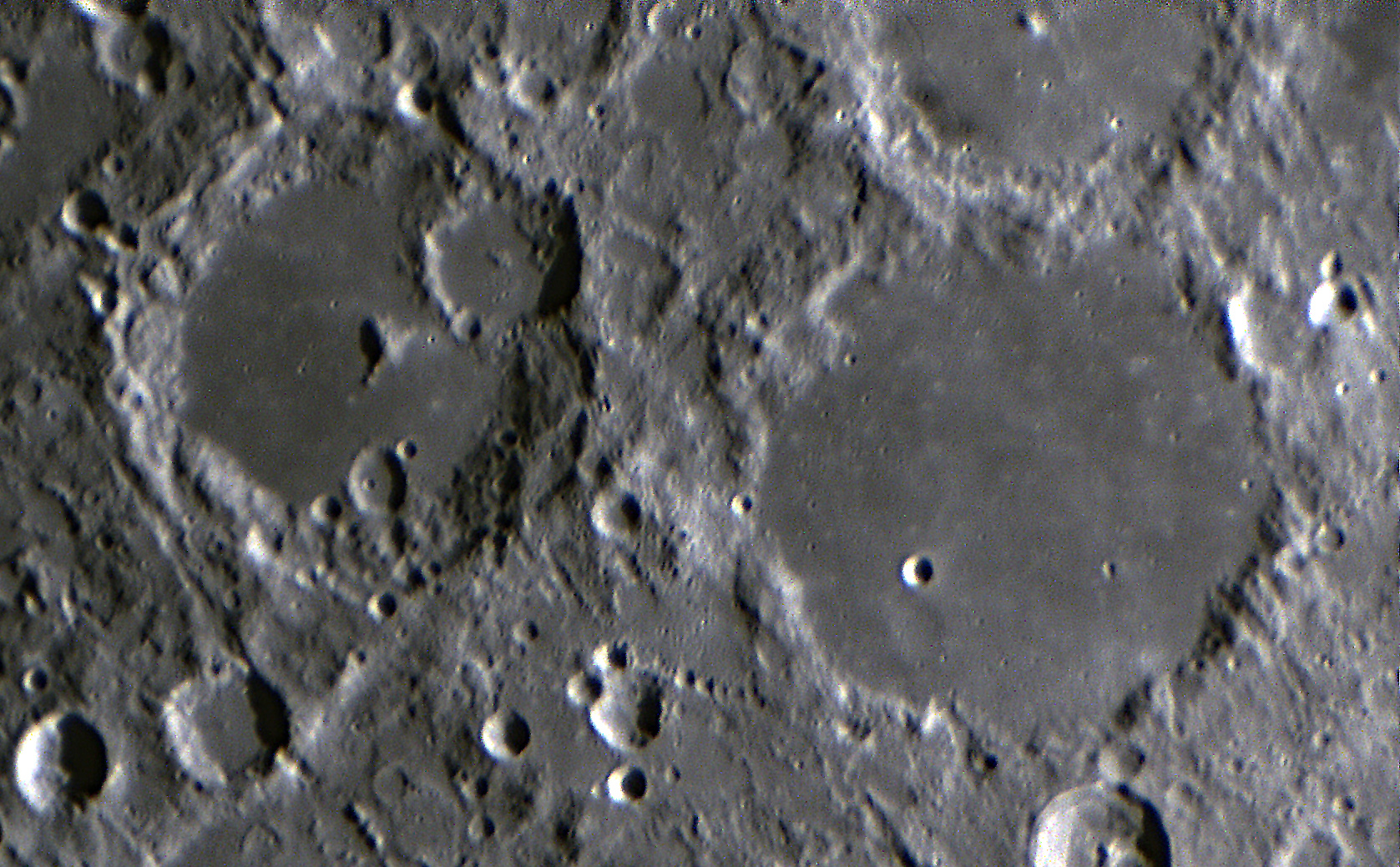 Large central craters are: Albategnius (left, with central mountain), ref and Ptolemaeus (right), ref. The crater were photographed from my backyard in Los Angeles, CA on September 17, 2022. Located east-northeast of Mare Nubrium. file: moonCrats9162022-1663330211069a2a.jpg Photographic Data |
|
| Posidonius Crater | |
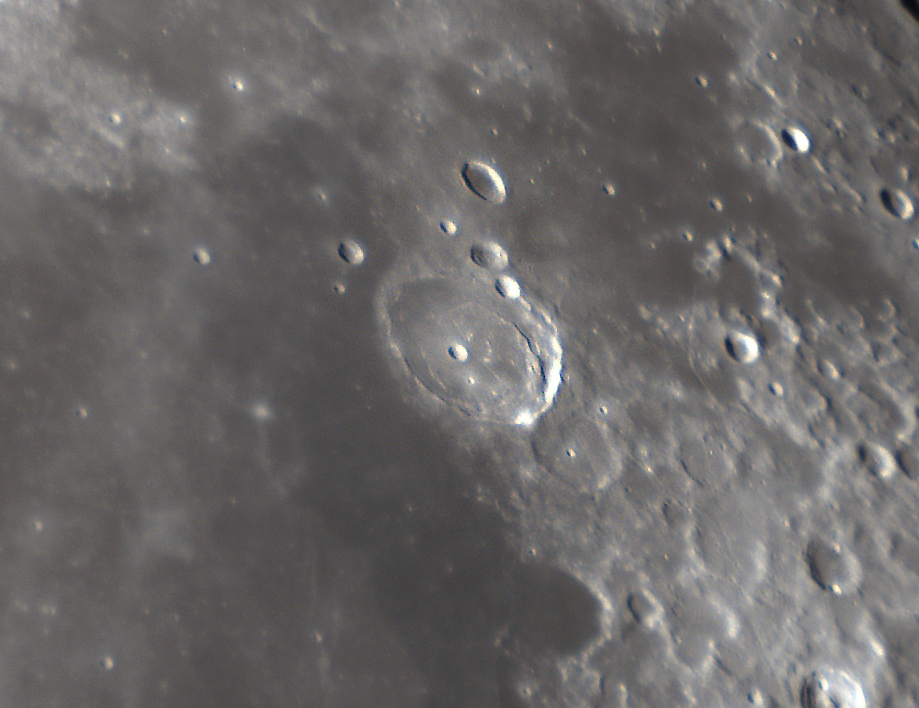 Posidonius Crater file: MoonCraters-on11102022-1668161512458acr1dspec.jpg Photographic Data |
|
| Kepler and Copernicus Craters | |
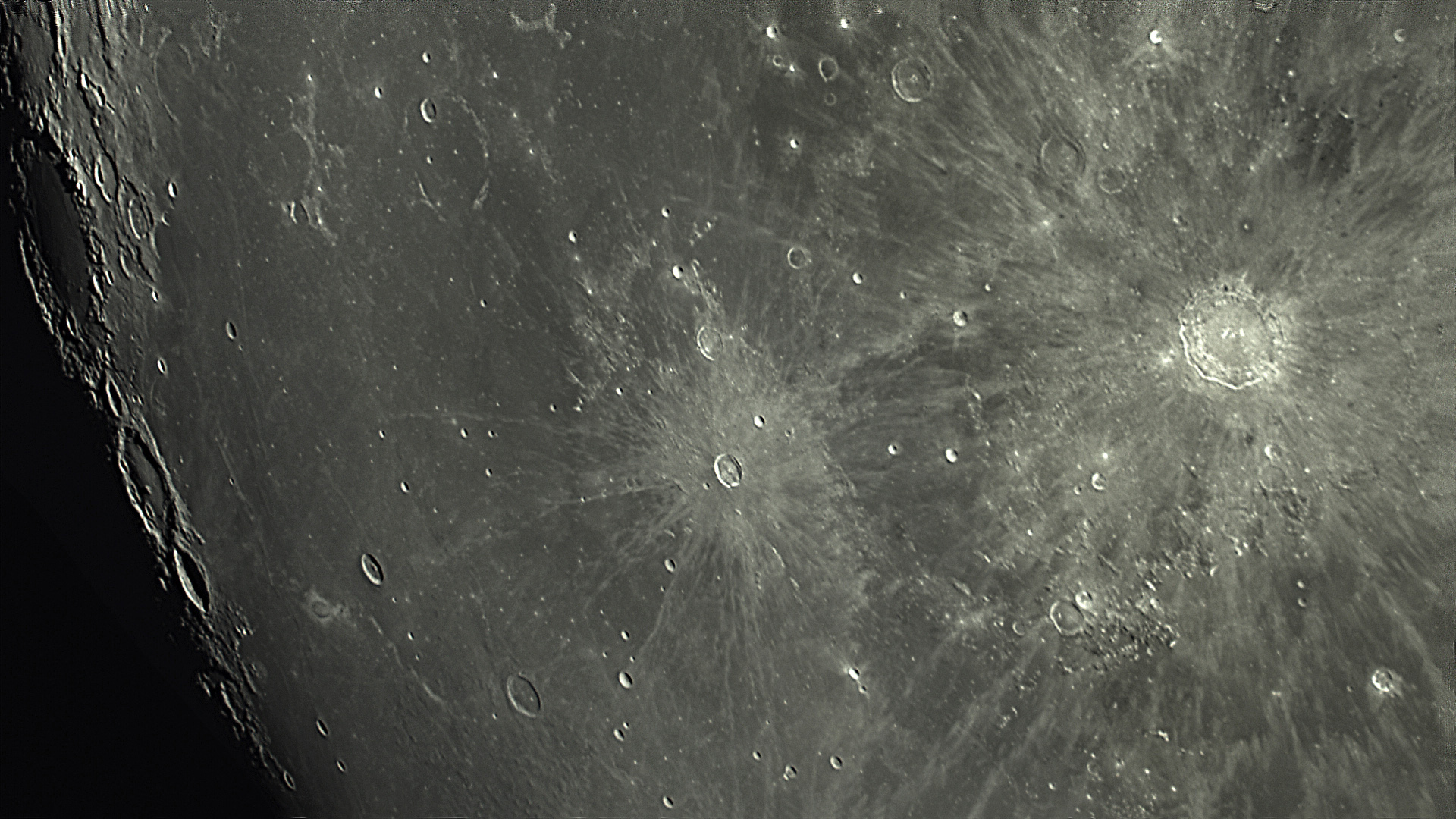 The western limb of the moon is on the left, Kepler Crater just left of center and Copernicus Crater on the right Photographed from my backyard in Los Angeles, CA file: MoonCC&KC-1667802137166a3ds-co.jpg About Kepler Crater Kepler (lunar crater) - Wikipedia It is a southern lunar rayed impact crater between Oceanus Procellarium and Mare Insularium, lying just west-southwest of Copernicus Crater. The central crater is 22 miles in diameter while the bright rays extend out about 180 miles. It is named for Johannes Kepler, a 17th century German astronomer and mathematician. About Copernicus Crater Photographic Data |
|
| Kepler Crater | |
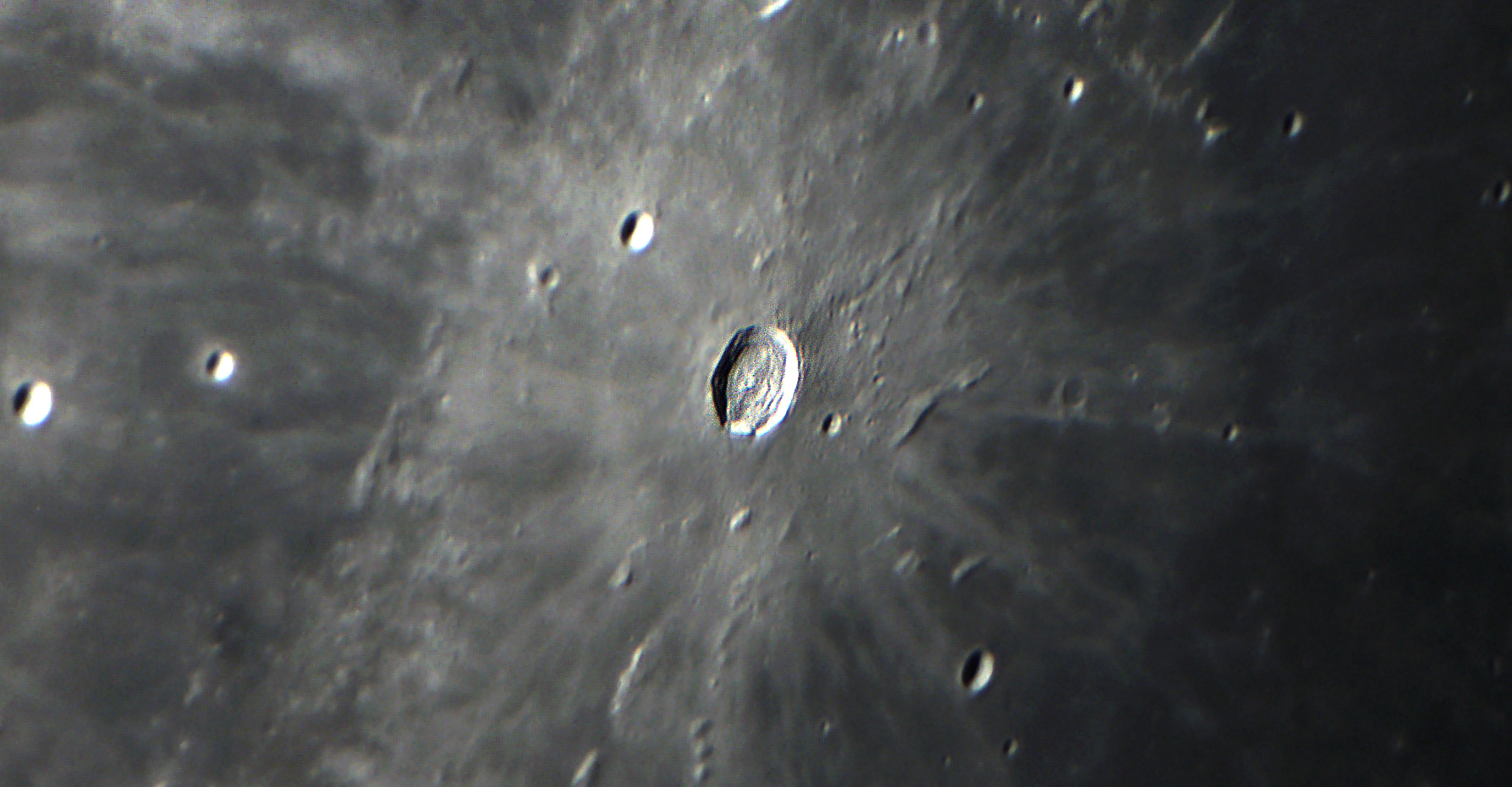 Kepler Crater Photographed from my backyard in Los Angeles, CA file: MoonKeplerCrater-on1152022-1667718619621a2.jpg About Kepler Crater Kepler (lunar crater) - Wikipedia It is a southern lunar rayed impact crater between Oceanus Procellarium and Mare Insularium, lying just west-southwest of Copernicus Crater. The central crater is 22 miles in diameter while the bright rays extend out about 180 miles. It is named for Johannes Kepler, a 17th century German astronomer and mathematician. Photographic Data |
|
| Copernicus & Eratosthernes Craters and southern Mare Imbrium | |
|
|
|
| Photographic Data Telescope: Celestron EdgeHD 9.25-inch f/10 SCT with focal length 2,350 mm (f/10) Camera: ZWO ASI662MC one-shot color planetary. Video frame rate less than 100/sec, ZWO IR-cut filter Video Exposure: About 20 seconds video capture at 1920 X 1080 resolution, Gain set to100. Post Processing: Stacked & sharpened from video frames (rate 100 fps) with Asiair Plus Adobe Photoshop Elements 2021 |
|
| Plato Crater and northern Mare Imbrium | |
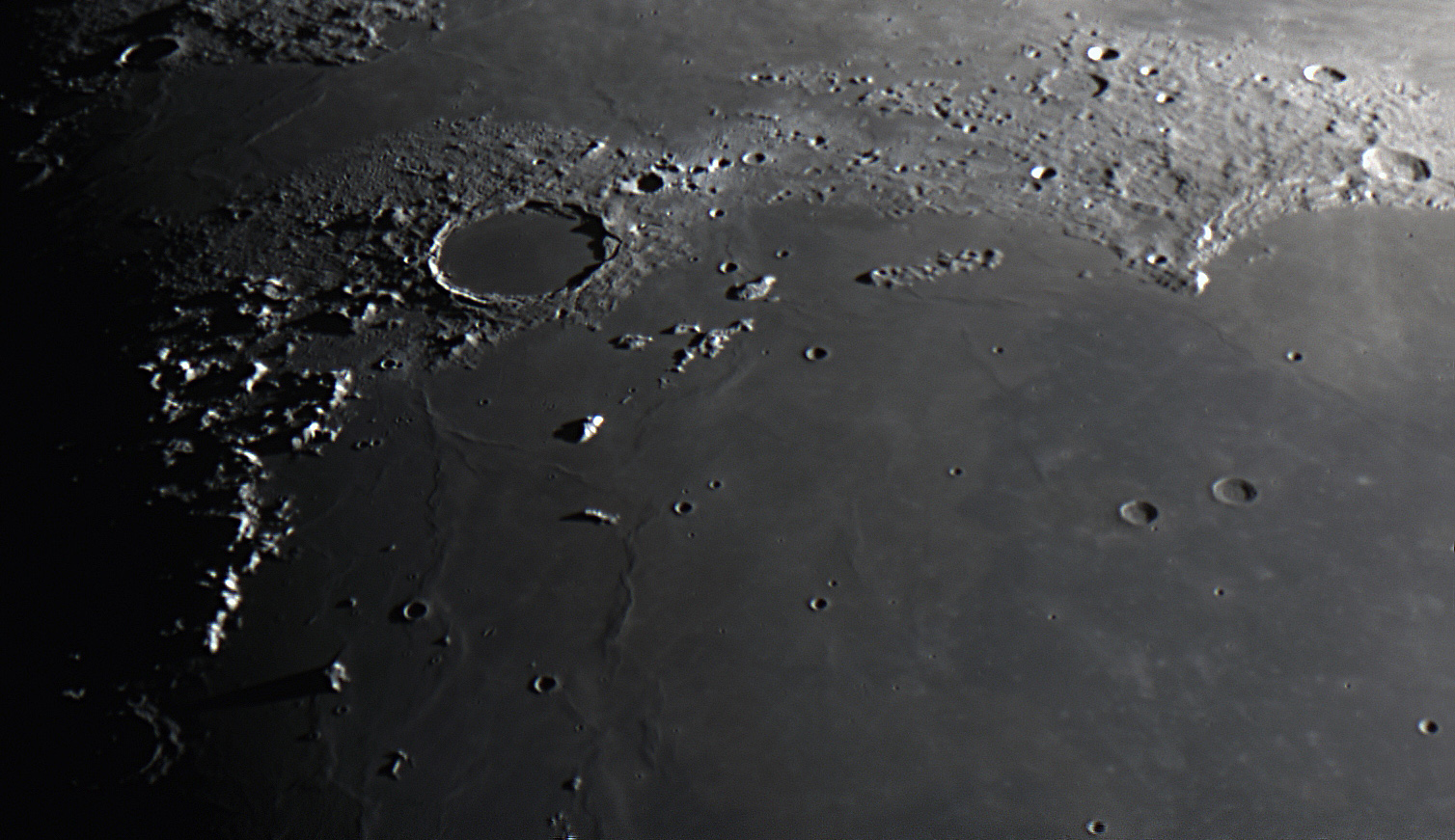 Large smooth floored Plato crater is at the upper left. Below is northern Mare Imbrium. Photographed from my backyard in Los Angeles, CA in the early morning of October 17, 2022. file: MoonPCaM-on10172022-1666015884380-1ax1cr.jpg . Photographic Data Telescope: Celestron EdgeHD 9.25-inch f/10 SCT with focal length 2,350 mm (f/10) Camera: ZWO ASI662MC one-shot color planetary. Video frame rate about 100/sec, ZWO IR-cut filter Video Exposure: About 20 seconds video capture at 1920 X 1080 resolution, Gain set to100. Post Processing: Stacked & sharpened from video frames (rate 100 fps) with Asiair Plus Adobe Photoshop Elements 2021 |
|
